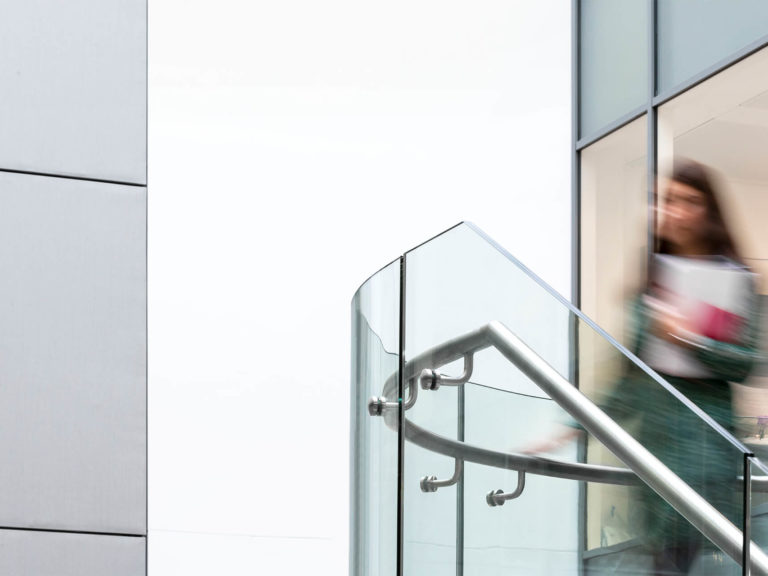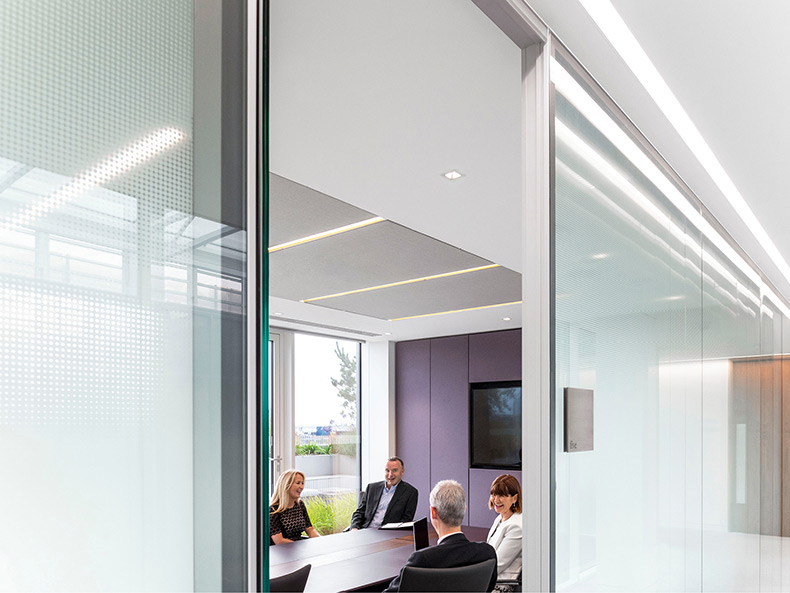

COVID-19 Practical Considerations: Newly Published Work Safely Protocol

Click here to view this briefing in PDF format.
The November Protocol replaces the May 2020 Return to Work Protocol (the “May Protocol”) and reflects the most up to date Government and public health advice including the Government’s Resilience and Recovery 2020 – 2021: Plan for Living with COVID-19. The November Protocol’s primary emphasis is on the need for continued monitoring and review of health and safety practice and procedures in the workplace along with providing access to employers and workers to up to date information.
The November Protocol also addresses issues that have arisen in the last few months such as COVID-19 clusters in certain sectors, access for workers to financial support when they are required to self-isolate or have COVID-19, requirement to wear face coverings in certain workplaces and the purchasing of suitable hand-sanitiser. The November Protocol contains non-exhaustive measures for managing and reducing the risk of COVID-19 in the workplace. It is subject to change and applicable to all sectors.
Sector Specific Measures
Further sector specific measures can be introduced to enhance those contained in the November Protocol. Many sectors such as the education, construction and hospitality sectors have sector specific COVID-19 guidance in place. Such sectors are now obliged to review and update their guidance in line with the advice in the November Protocol. In addition, the HSE Department of Public Health and the Health Protection Surveillance Centre may also provide specific advice to sectors in response to outbreaks or other evidence and data. In such situations, engagement and cooperation is expected between the employer, the Lead Worker Representative(s) and workers.
Steps For Employers and Workers
The November Protocol sets out four key steps for employers and workers to reduce the risk of exposure to COVID-19 in the workplace, which we have summarised below.
- 1. Keep COVID-19 Response Plan up to date
All employers were required under the May Protocol to prepare and implement a COVID-19 Response Plan. The message in the November Protocol is to ensure it is reviewed and kept up to date with the latest public health advice. In addition, employers should include in the Plan, any specific communication measures that are required for workers whose first language is not English. In these workplaces, employers should identify leads who can act as communicators to particular groups. - 2. Implement and maintain policies and procedures for prompt identification and isolation of workers with COVID-19 symptoms
Employers should have in place a contact tracing system and maintain up to date information on all workers, including contact information which may be needed by the Department of Public Health in the event of an outbreak.
There is a significant emphasis under this step on the importance of providing information to workers on COVID-19 symptoms, the need for them to stay out of the workplace if unwell, how to receive illness benefits or other COVID-19 Government supports, and up to date public health advice (and information in languages other than English as required).
Employers must cooperate with the local Department of Public Health in the case of an outbreak in their workplace and implement any necessary follow up actions.
Workers for their part must familiarise themselves with COVID-19 symptoms, ensure they follow public health advice in relation to getting tested and self-isolating or restricting their movements as appropriate. They are obliged to cooperate with any public health personnel and their employer for contact tracing purposes and follow any public health advice given in the event of a case of an outbreak in their workplace - 3. Develop, Update, Consult, Communicate and Implement Workplace Changes or Policies
The notable points under this step include an obligation on employers to continue to:- review and revise existing sick leave policies where appropriate;
- agree through negotiation with workers/Trade Unions any temporary restructuring of work patterns that may be required to implement COVID-19 prevention measures in the workplace, taking into account any existing sectoral agreements; and
- minimise staff rotation across multiple settings and workplaces, in particular in relation to agency contracts.
- 4. Implement COVID-19 Infection Prevention and Control (IPC) Measures
The fourth step is the most comprehensive and contains a list of twelve IPC measures, many of which employers and workers alike are by now very familiar with, such as hand hygiene, physical distancing and cleaning. Other measures of note are as follows:- Pre-Return to Work Measures
The November Protocol sets out a detailed list of what employers and workers are obliged to do prior to returning to work for the first time after a workplace closure. This is particularly relevant as the country moves through different levels of the Plan for Living with COVID-19, which may require businesses to open and close every few weeks. The pre-return to work measures will have to be repeated on each occasion following a re-opening of a workplace.
Employers must require employees to complete a return to work form. A template form is available from the Health and Safety Authority here. In addition, workers should complete an induction training to contain, at a minimum the latest up-to-date advice and guidance on public health. The Health and Safety Authority has free online courses in relation to returning to work safely (available here) which employers can access. Employers must put in place any necessary controls identified in a risk assessment, implement temperature testing in line with public health advice (to date this has only been implemented in certain high risk sectors and workplaces) and implement any COVID-19 testing that may be required as part of mass or serial testing requirements in line with public health guidance.
Employees for their part must comply with public health guidance in relation to self-isolation or restriction of movements, complete a return to work form and undertake any necessary training. They must cooperate with their employer in relation to prevention measures, including physical distancing, hand hygiene and wearing of PPE where required. They are also obliged to complete any temperature testing implemented by their employer in line with public health advice. Advice previously published by the Department of Business, Enterprise and Innovation (available here) and the Data Protection Commission (available here) on data protection issues arising from the May Protocol, including in relation to temperature testing, remain relevant for the November Protocol.
Completed pre-return to work forms should only be retained for as long as necessary by the employer and in line with the advice from the Data Protection Commission. Where an employee has been absent from the workplace for an extended period (e.g. following annual leave), an employer can request an employee to reconfirm the details previously provided in their pre-return to work form. - Working from home
Workers should continue to work from home “to the greatest extent possible”. Employers should develop and consult on any working from home policy in conjunction with workers and/or Trade Unions. The Plan for Living with COVID-19 sets out when only essential workers or other designated workers should go to work. - Business Travel
The November Protocol provides that business trips and face-to-face interactions should be reduced “to the absolute minimum”. For any necessary work-related trips, the use of the same vehicles by multiple workers is discouraged. The number of workers who share a vehicle should be kept to a minimum as far is as reasonably practicable, with employers considering assigning a vehicle to a fixed team or pod.
Further guidance is provided in relation to the cleaning of vehicles and sharing of vehicles for work purposes.
In relation to international business travel, the November Protocol notes that Ireland has implemented the new EU “traffic lights” approach to travel in the EU/EEA (+UK). The advice for travel to these countries remains is “exercise a high degree of caution.” The general advice for any other overseas travel remains “avoid non-essential travel” or in some cases, “do not travel.” Travel within the island of Ireland can continue as normal, subject to domestic public health restrictions.
- Pre-Return to Work Measures
The November Protocol also provides detail on IPC measures under the following headings: dealing with a suspected case of COVID-19 in the workplace, at risk workers, contractors and visitors, use of PPE and customer facing roles.
Worker Role – Workplace and Community Settings
Under the Safety, Health and Welfare at Work Act 2005 (the “2005 Act”), employees are under an obligation to take reasonable care to protect the health and safety of themselves and of others in the workplace. In recognition that the spread of COVID-19 is not limited to the workplace but that it is a general public health issue, the November Protocol sets out not only workers’ obligations in the workplace but in community settings.
- 1. Workplace Settings
In the workplace, workers should:- follow the requirements set out in the November Protocol and “with any specific direction from the employer”;
- communicate and engage with the Lead Worker Representative(s);
- adopt physical distancing and good hygiene practices; and
- seek medical advice when unwell.
It is important that workers should not attend work if feeling unwell or have any signs or symptoms of COVID-19.
- 2. Community Settings
Outside of the workplace, workers should:- where possible, travel alone if using their cars to get to and from work;
- where they cannot travel alone in their car to work, travel as a team/pod and use face coverings;
- wear a face covering and follow physical distancing when on public transport to and from work;
- follow public health and Government advice if sharing accommodation with colleagues;
- avoid congregating outside of work, either in shops or in social settings such as house parties;
- practice the same IPC measures, physical distancing, hand washing and respiratory etiquette, along with the Government’s Plan for Living with COVID-19; and
- follow public health guidelines, where travelling for personal reasons.
Face Coverings
The Appendix to the November Protocol contains a useful summary of the position in relation to the wearing of face coverings. There is a legal obligation to wear face coverings on public transport and in certain premises and businesses such as shops, museums, hair salons and cinemas. This obligation has been extended to 9 June 2021. The November Protocol notes that there is currently no legal obligation to wear a face covering in an office. It does however advise that consideration be given to wearing a face covering where it is difficult to maintain a 2 metre distance such as when entering or exiting a building, moving throughout a building to photocopiers, and on stairwells, and in canteens and kitchen areas. Employers are advised to keep up to date with the latest public health advice and regulations in relation to the use of face coverings.
Assessment
As with the May Protocol, the November Protocol contains non-exhaustive measures and should not be considered in isolation. It supplements existing employer and employee obligations under the 2005 Act, together with its associated Regulations and Codes of Practice. Employers should therefore familiarise themselves with the existing framework when adhering to the November Protocol.
The Health and Safety Authority will remain the lead State agency in co-ordinating compliance with the November Protocol. The HSA has general powers under the 2005 Act to inspect premises and take steps where health and safety measures are not being implemented. Our briefing COVID-19: What to Expect from a Health and Safety Authority (HSA) Inspection is a useful resource for employers in this regard. In addition, templates and checklists published by the HSA can be accessed by employers here.
The tone of the communication being issued at Government level focuses on working with employers to achieve compliance and proactively assist in supporting improvement where issues arise.
With the publication of the November Protocol, employers should review practices and procedures they currently have in place to address the risk of the spread of COVID-19 in the workplace, to ensure these are in line with the most up to date Government and public health advice. The November Protocol contains all of the most up to date advice and links to relevant departments and state bodies to ensure it is easily accessible to employers and workers alike.
While the November Protocol emphasises the role of the worker in reducing the spread of COVID-19 in the workplace, it is clear that there is a significant onus on the employer to inform and educate workers and to ensure they have access to the most up to date public health advice in a format that is easily accessible and understood by them. In light of the duty of workers under the 2005 Act to comply with health and safety obligations to protect their own safety, as well as the safety and health of others in the workplace, failure to do is likely to be dealt with by an employer as a disciplinary issue under disciplinary procedures.
